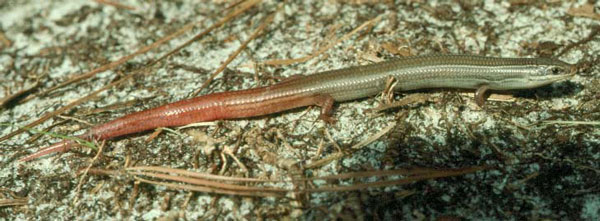Skink may lose habitat in Florida Keys due to rising sea levels.
The Florida Keys mole skink (Eumeces egregius egregius) is being threatened by rising sea levels, according to the Center of Biological Diversity, which Feb. 20 filed a formal notice of its intent to sue the U.S. Fish and Wildlife Service (USFWS) for failing to protect the lizard under the Endangered Species Act. The Center petitioned the USFWS in 2011 to protect the skink, and the USFWS stated that federal protection may be warranted, but the service failed to conduct a 12 month assessment to determine if protection of the skink will be granted.

USFWS
Florida Keys Mole Skink
The Center says that the skink is also vulnerable to storms and storm surges, and "coastal squeeze" which the Center says occurs when the lizard's habitat is "pinched" or taken away by the rise in sea levels combined with coastal development.
Read about Caribbean skinks here.
For more skink information, click here.
The Florida Keys mole skink is a small lizard with brownish coloration with a red to brown tail with slight black stripes. Its scales are smooth and shiny. Its legs are small and fully developed and it can grow to around 5 inches in length, including the tail. It can be found along the shoreline of the Dry Tortugas and and the Lower Keys. Its population has declined by 30 percent, the center says, and is now considered rare.



